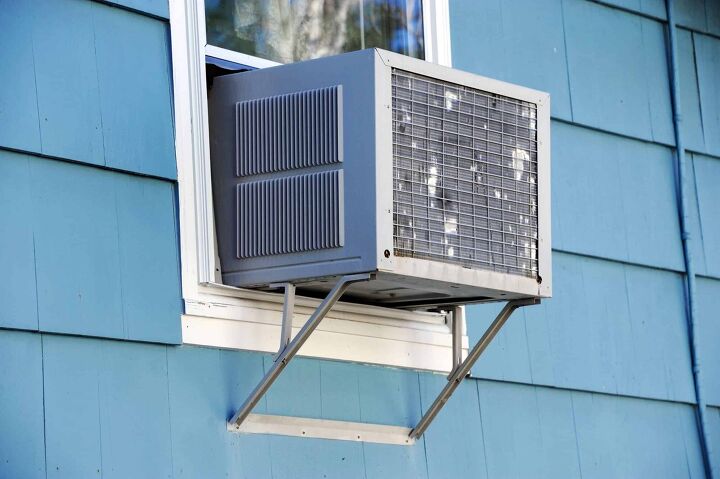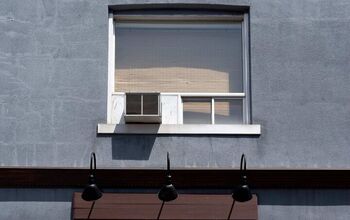What Kind Of Mold Grows In Window Air Conditioners?

Window air conditioning units are lovely in the summertime. On a hot day, you can flip a switch and out pops some nice cold, refreshing air. However, there is one issue with these types of units: Mold. Mold is problematic no matter what type you have, although some are worse than others.
Mucor and Acremonium are two types of mold that commonly grow in air conditioners. Black mold does not grow in air conditioners, but Fusarium is a fast-spreading mold in ACs that can be dangerous. Alternaria is the least threatening mold that can grow in an air conditioner, but it can still cause respiratory problems.
What causes mold to grow in air conditioners anyway? We will explain the four types of mold in further detail and tell you how you can prevent them from growing. Also, we will tell you what to do in case you already have mold inside your window unit.
Do You Need Mold Inspectors and Testing Services?
Get free, zero-commitment quotes from pro contractors near you.

Why Does Mold Grow In Window Air Conditioners?
There are several reasons why your window unit may be growing mold. As your air conditioner compresses the air, it forms water as a byproduct. That water is then supposed to flow out of your air conditioner. However, sometimes, the water becomes stagnant and results in mold growth.
The Four Common Types of Mold
Mucor
Mucor is an allergenic form of mold that is commonly found within HVAC systems and carpets. This particular kind is formed due to moisture from condensation. That means this grey-colored mold loves the inside of your air conditioner.
Also, Mucor is known to cause significant respiratory distress. This is true, especially for individuals with pre-existing breathing problems. Although rare, people have had issues such as:
- Blood infections
- Brain infections
- Sinus damage
- Vision problems
Acremonium
Acremonium is a toxigenic type of mold commonly found in air conditioners, humidifiers, drain pans, and window sealants. It is typically formed anywhere you can find condensation, and it’s highly dangerous.
Acremonium will present as pink, orange, white, or grey, and the appearance will change over time. Eventually, it will become a cloud of fine dust that is easy to blow through your window unit’s vents.
Exposure to acremonium can lead to:
- Bone marrow disease
- Immune system dysfunction
- Organ failure
- Brain dysfunction
Fusarium
Fusarium is a toxigenic mold that thrives in colder climates. Yes, this makes your air conditioner the perfect environment for this type of fungus. The difference between Fusarium and the others is that it spreads very quickly.
This mold is usually pink, white, or red, and causes many different health issues. Upon exposure to Fusarium, one can experience many various health problems, including:
- Chronic sinus infection
- Cold-like symptoms
- Bone Infection
- Severe skin infections
Alternaria
Alternaria is an allergenic mold that is the least threatening to humans and pets. It is usually green or brown with hairs and loves moisture. This mold is the most common type of mold found in your house.
When someone is exposed to Alternaria, they will experience:
- Runny nose
- Respiratory infections
- Sore throat
What sets this particular mold apart from the others is its ability to destroy. It will destroy your air conditioner and anything else that it comes into contact with if it’s not immediately removed.
What To Do If You Find Mold In Your Window Air Conditioner
Step 1: Remove Your Air Conditioner
If you suspect mold growing in your air conditioner, turn it off. You want to stop the potential mold from spreading throughout your home any more than it already has. Once you turn it off, unplug it and remove it from the window.
Step 2: Check For Mold
Next, you’ll need to check for mold. It’s a good idea to have a dust face mask, gloves, and goggles during the rest of this process.
Remove the front grill on your window unit and the inside filter. Look inside with a flashlight. If you see clusters of green and brown or any streaking, you may have a mold problem. If the mold is covering more than 1/3 of the inside, you will need to replace your unit.
Step 3: Disassemble Your Unit
If you see that there isn’t too much mold in your unit, you can clean it. Check the manual for the manufacturers’ instructions. Figure out how to disassemble it to access the interior walls.
Step 4: Soak Your Filter
You will want to take your filter and place it is hot, soapy water with ½ cup of bleach. Let this soak while you are cleaning the rest of your air conditioner. The bleach will kill the mold, and the soap will clean your filter.
Step 5: Clean The Mold
Next, you need to vacuum out the mold from your unit. Use a nozzle attachment to decrease the spread of particles.
Spray your coils with coil cleaner. The cleaner will dissolve anything that is on the coils, including mold. After you let it sit for a little bit, wash it off outside with a garden hose. Try not to spray your control panel or the area where your electrical cord connects.
Step 6: Bleach The Unit
Fill a bucket up with 2-3 gallons of hot water and ½ cup of bleach. Take a sponge and clean the interior of your unit with this mixture. The bleach will help to kill any residual mold that’s leftover after spraying.
Step 7: Rinse The Filter
Take your filter and rinse it off with the garden hose. Any debris that was on your screen should come right off. If it doesn’t, you may need to buy a replacement.
Step 8: Air Dry
Let your unit completely air dry before reinstalling it into your window. This can take up to 48 hours in total. You do not want to reinstall it even if it’s mostly dry. It needs to be 100% dry; otherwise, you will be dealing with the regrowth.
Preventing Mold Growth In Your Window Unit
If you’ve already had a mold issue, it’s bound to happen again. It’s nearly impossible to remove 100% of the spores because you can’t access all inner workings. However, you can remove the grill frequently to vacuum out the dust.
If you keep the dust from settling, it won’t give the mold a chance to grow. This is also a great way to prevent mold problems before you get them. Make sure you vacuum out your unit at least once a month.
Correct Installation
Your window unit should tip towards the outside of your window. The water byproduct is supposed to drip out of the drain-hole from the back. If your unit is not installed correctly, the water can drip inside, or become stagnant.
Proper Storage
During fall and winter, make sure you store your air conditioner properly. Set it in a place where water will not have access to it. Also, you can cover it with plastic wrap, or tarp as an extra precaution. This way, mold is less likely to creep into your window unit when it is not in use.
Regular Cleaning
If you’ve had mold in your air conditioning unit previously, there’s an increased risk that it will return. A presence of dust inside the unit creates the ideal situation for mold spores to adhere and grow. To prevent dust from settling, remove both the grille and filter every couple weeks and vacuum the interior.
Filter Care
When you clean the filter, it needs to be washed. After washing, it will need to air dry completely before you replace it. If it isn’t completely dry, you run the risk of mold spores.
Related Questions
Is mold in your air conditioner hazardous to your health?
Yes, mold in your air conditioner can become hazardous to your health. However, you need to be exposed for a prolonged period to experience severe side effects. If you’re allergic, though, the acute symptoms will set in quicker.
Can you clean an air conditioner if it is filled with mold?
Technically, you can. However, you may want to replace the unit. Once mold grows inside your AC unit, the chances are slim to get all of it out. If your AC is full of mold, it may worsen your health if you open it. It’s a better idea to buy a new one instead.
Do You Need Mold Inspectors and Testing Services?
Get free, zero-commitment quotes from pro contractors near you.

Final Thoughts
Regardless of the type of mold growing in your air conditioner, you need to remove it as soon as possible. Running your AC with mold growth is not worth the risk to your health. While the kind found in your air conditioner is not black mold, it’s still hazardous to your health.
Take the time to check your air conditioner and clean it if possible. If your initial inspection reveals rampant mold and mildew inside the window AC unit, don’t attempt to clean it. Instead, replace the entire unit, as heavy visible mold indicates that there is likely more mold growing in areas that you can’t see.
When in doubt, you can always call a mold remediation specialist to inspect the unit and see if it’ll benefit from a professional cleaning. Regardless, it is incredibly unhealthy to breath air that has been contaminated with mold, so if it can’t be cleaned, it must be replaced.
Don’t sweat it if you need to replace the unit. Worst-case scenario? You’ll end up with a brand-new air conditioner.

Heather is a passionate writer who loves anything DIY. Growing up, she learned everything from home repairs to design, and wants to share her tips with you. When she's not writing, she's usually hiking or searching for her next DIY project.
More by Heather Robbins












![How Much Weight Can a 4×4 Support Horizontally? [It Depends!]](https://cdn-fastly.upgradedhome.com/media/2023/07/31/9070333/how-much-weight-can-a-44-support-horizontally-it-depends.jpg?size=350x220)
![The 5 Best Angle Grinders – [2022 Reviews & Buyer's Guide]](https://cdn-fastly.upgradedhome.com/media/2023/07/31/9071326/the-5-best-angle-grinders-2022-reviews-buyer-s-guide.jpg?size=350x220)









![12 Washing Machine Brands to Avoid [with Recall Data]](https://cdn-fastly.upgradedhome.com/media/2023/07/31/9075781/12-washing-machine-brands-to-avoid-with-recall-data.jpg?size=350x220)



